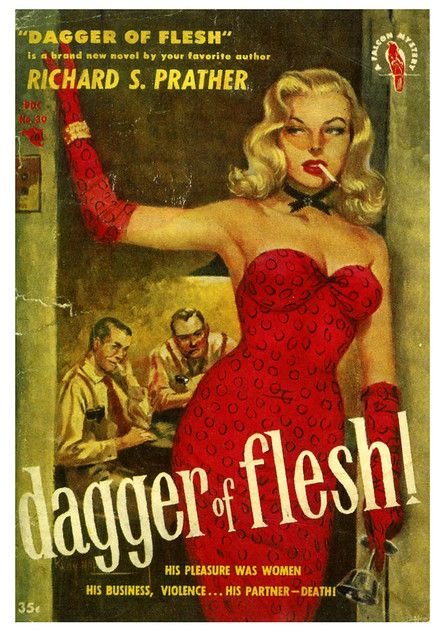The Tainted Spotlight
The evolution of women in film: from passive side characters to vicious stars
Written by Noa Chamberlin, Assistant Arts Editor
The portrayal of women in television and film has come a long way. Women started as passive and weak characters, and gradually transformed into the viscous and sometimes villainously fierce lead; however, despite this progress, women cannot escape the sex appeal attached to their character.
When women began to star in films, they often played the romantic interest who aimlessly pined after the masculine lead for his love and attention. During the Great Depression, women were used in films to create a sense of fantasy and a distraction from the economic conditions of the time (Cabreraga, 2015). Although female roles were prevalent, their priorities were set on pleasing the men, creating a family and focusing on the traditional roles of a stay-at-home mother (Cabreraga, 2015).
A study about the theory of gender differentiation found that in the media, “women are portrayed as dependent on other characters, over-emotional and confined to low-status jobs when compared to enterprising and ambitious male characters.” (Bussey & Bandura, 1999).
In the late 1950s, women in film were given two options: become a sex symbol or be portrayed as a “domestic goddess” (Cabreraga, 2015). Female characters were never given realistic jobs or opportunities to embody fierce and independent characters. James Bond films began in 1963 and even today, the female always plays a side character; she either stands to the side as the helpless girl in need of Bond's saving or she plays the sexy villain whose main weapon is utilizing her body. Both female roles result in falling head over heels in love with the action hero (Phan, 2021).
Women’s roles gradually became more progressive in the film industry and detached from the domestic sphere and reliance on male characters. In 2003, “Kill Bill Volume I,” a film by Quentin Tarantino, revolutionized the film industry for women. Uma Thurman’s character known as “The Bride” becomes a completely vicious killer who practically hunts the people who wronged her in her past (Wilford, 2015). She trains and devours her components, a dominating, aggressive lead destroying the connotation of a passive love interest.
As a female who is extremely passionate about film, I can only imagine how frustrating it would’ve been to constantly see women playing the housewife whose main goal in life is to procreate and serve as eye candy to audiences. Women provide a distinct perspective, especially in media that is more substantial than a weak assistant to the male character.
According to Dr. Lisa Coulthard, professor in film studies at the University of British Columbia, the shift that recognizes female power and willingness to fight and become a violent, fierce and aggressive character has continued to develop in recent years. “Across the world, women are paying the price of moves to limit and control female rights and choice and freedoms, and they are rising up to fight back,” Coulthard said in an interview with BBC Culture (Balanescu, 2022).
Although women started to gain more progressive roles in film, there is still a female perception and male gaze applied to women, especially women in villainous roles. Playing the lead or the boss character does not stop women from being viewed as eye candy in films (Elks, 2019). Take Margot Robbie for example. By playing a supervillain in “Suicide Squad” or the gorgeous wife in “The Wolf of Wall Street,” Robbie’s characters are consistently made to draw attention to her body and perceive her as a dumb sexy blonde (Aliens of Cinema, 2022). A power-centered role does not protect women from being objectified in the media.
However, in a more progressive time, women now speak up for themselves and change the common stereotypes that have plagued the media for decades. Jennifer Anniston expressed her frustration with “the objectification and scrutiny [the industry] puts women through,” labeling it as “absurd and disturbing,” (San Miguel, 2016). I do not doubt that the females of my generation are making even more of a change on top of what’s already been accomplished. Women are fierce and vicious, and they should have opportunities outside a passive character absent of opinion and voice.
Females and young girls are an essential part of the future. When young girls consume media, they should see strong and ferocious women, even the women who play the villains should be empowering. Underlying sexism or depiction of females as sex objects should be eliminated from our reality. Whether delicate or menacing, women should empower and express strength, not be objects in need of James Bond’s saving.
Sources:
Balanescu, M. (2022). Female rage: The brutal new icons of film and TV. BBC Culture.
Bussey, K., & Bandura, A. (1999). Social cognitive theory of gender development and differentiation. American Psychological Association.
Cabreraga. (2015). The evolution of women in film timeline. Timetoast timelines.
Elks, S. (2019). Women treated as Totty in films even when they play leaders, finds study. Reuters.
Phan, N. (2021). Evolution of bond girls. The Exonian.
San Miguel, C. (2016). 20 Actresses Who've Spoken About the Objectification of Women in Hollywood. Cafe Mom.
Wilford, L. (2015). Killing the spirit of fear: How female action heroes can help women live courageously. Christ and Pop Culture.
(2022). Actress Who Were Needlessly Hyper Sexualized in Movies. Aliens of Cinema.

